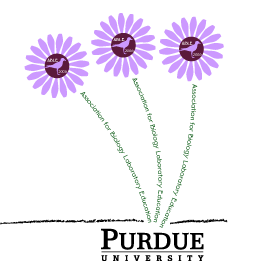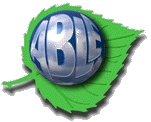Site Links
<![]() ABLE 2007: University of Kentucky, Lexington, KY June 5-9. Host: Ruth Beattie
E-mail: rebeat1@uky.edu
ABLE 2007: University of Kentucky, Lexington, KY June 5-9. Host: Ruth Beattie
E-mail: rebeat1@uky.edu


Major Workshops
Wednesday June 7
Mary Puterbaugh Mulcahy, University of Pittsburgh at Bradford and Dr. Harry
Edenborn, an environmental microbiologist with the National Energy Technology
Laboratory, U.S. Department of Energy, Pittsburgh, PA
Environmental Microbial Ecology
In this open-ended inquiry exercise, participants develop and test a hypothesis
about microbial ecology. Specifically, the hypothesis that participants
choose must be testable with the “EcoPlate,” a multiwell test plate
that allows rapid determination of the metabolic diversity of a bacterial population
without tedious and time-consuming reagent preparation by the instructor. After
inoculation with a solution of bacteria washed from a soil or plant sample, the
plate returns a unique set of positive (purple) and negative (clear) reactions
that allows participants to assess whether or not two samples contain similar
or dissimilar bacterial populations. It can also, given certain assumptions,
allow participants to evaluate whether one sample contains a more physiologically
diverse assemblage of bacteria than another sample. This type of
analysis is termed the “community level physiological profiling,” or
CLPP, of natural microbial diversity. This exercise was developed for use
in a sophomore-level ecology and evolution class at the University of Pittsburgh
at Bradford. For this course, the Principal Investigator (PI) System was
used and students worked in groups of three to prepare a proposal, complete their
experiment and submit a lab report. Students anecdotally responded that
they enjoyed developing their own experiment with the EcoPlates, and the PI groups
playfully competed with each other for the one whose project resulted in the
fastest color changes. Students participating in the lab exercise appeared
to develop a new appreciation for microbes and their physiology, a greater
respect for sterile techniques, and a healthy and realistic degree of frustration
with the fact that even small experiments require considerable forethought,
and that the data generated are frequently hard to interpret.